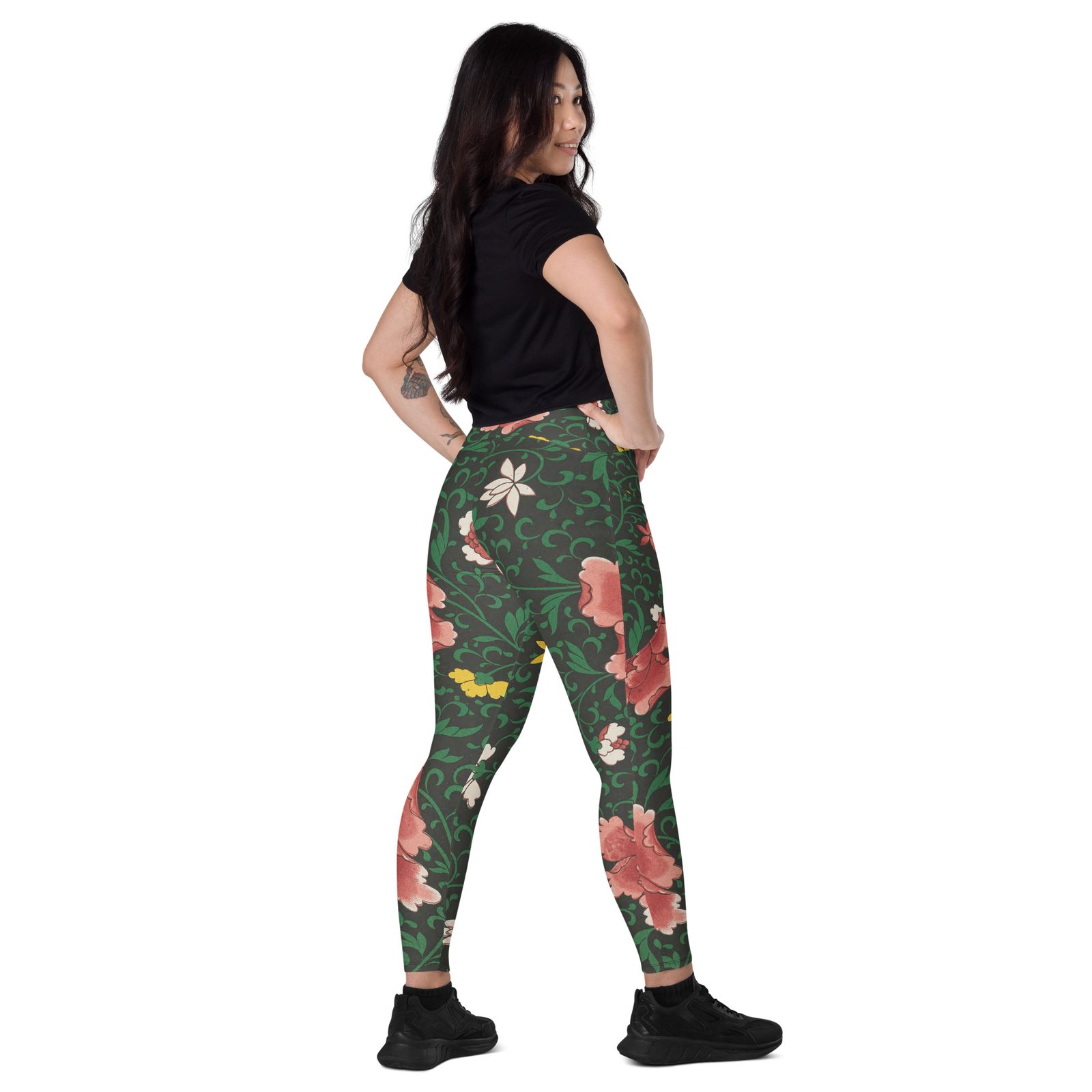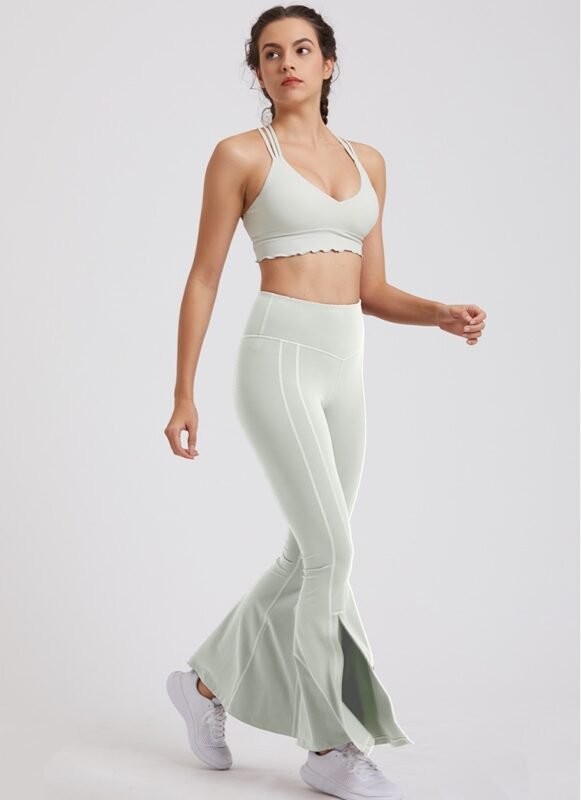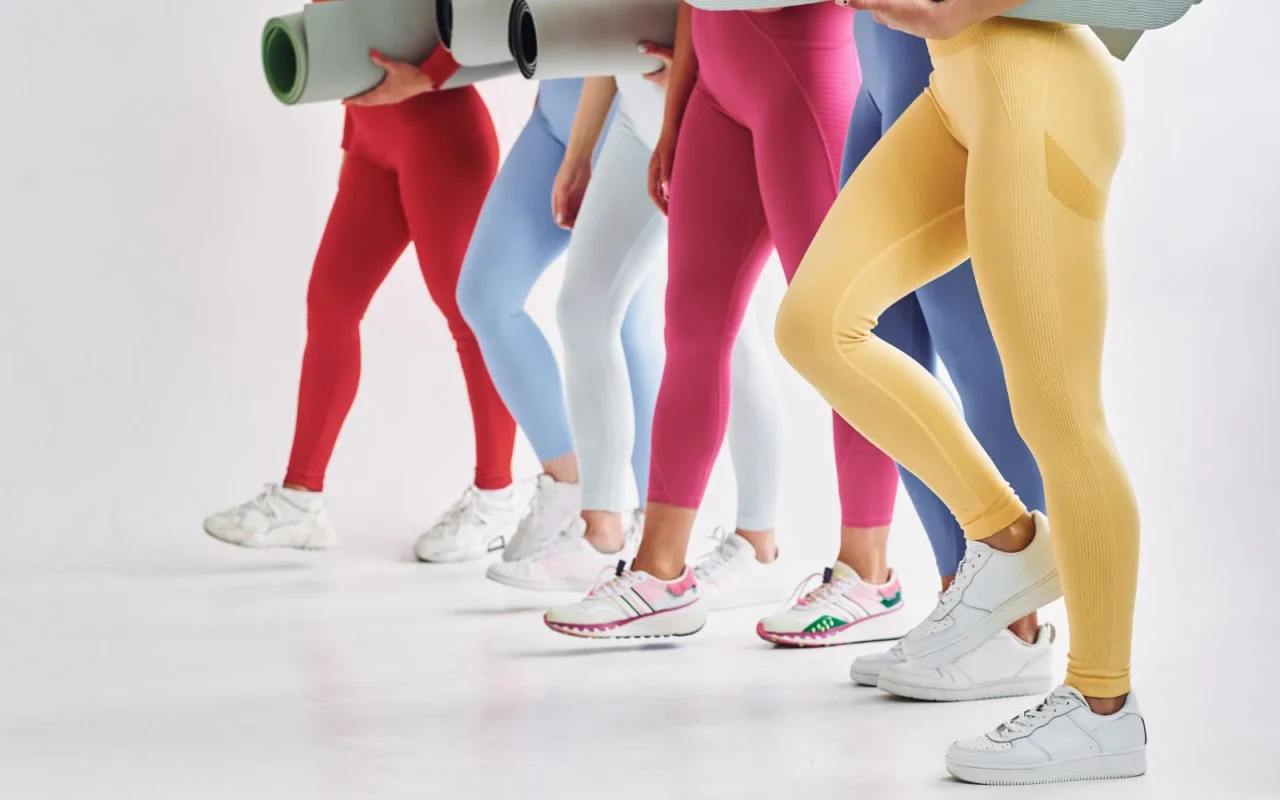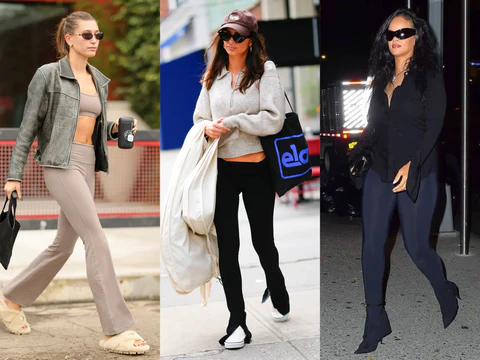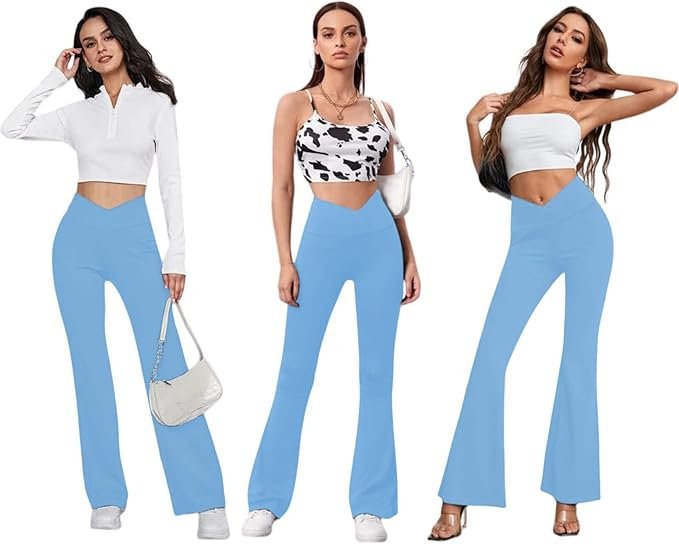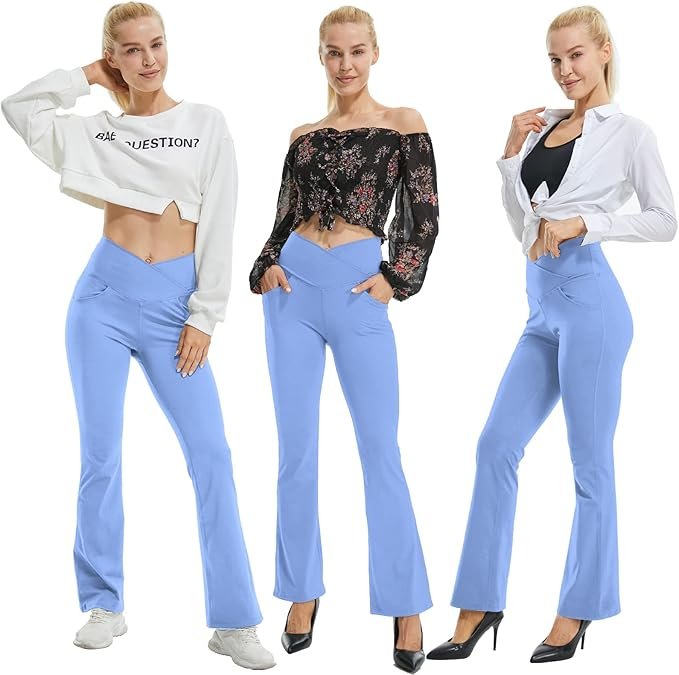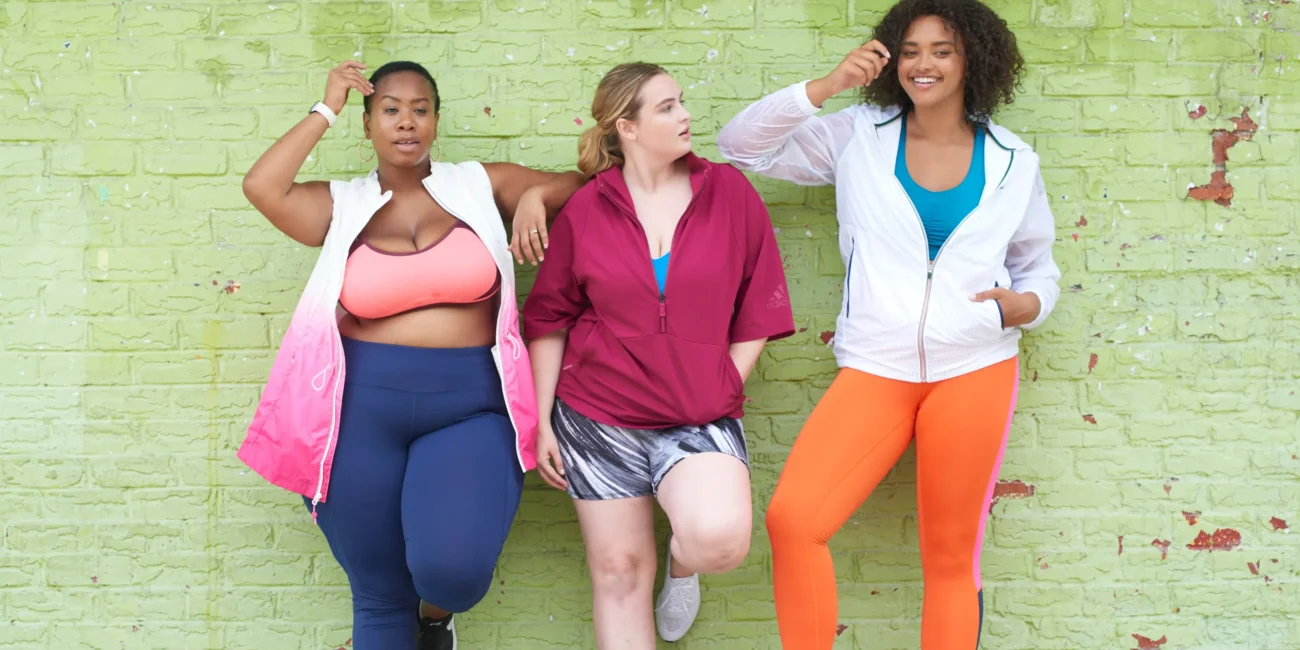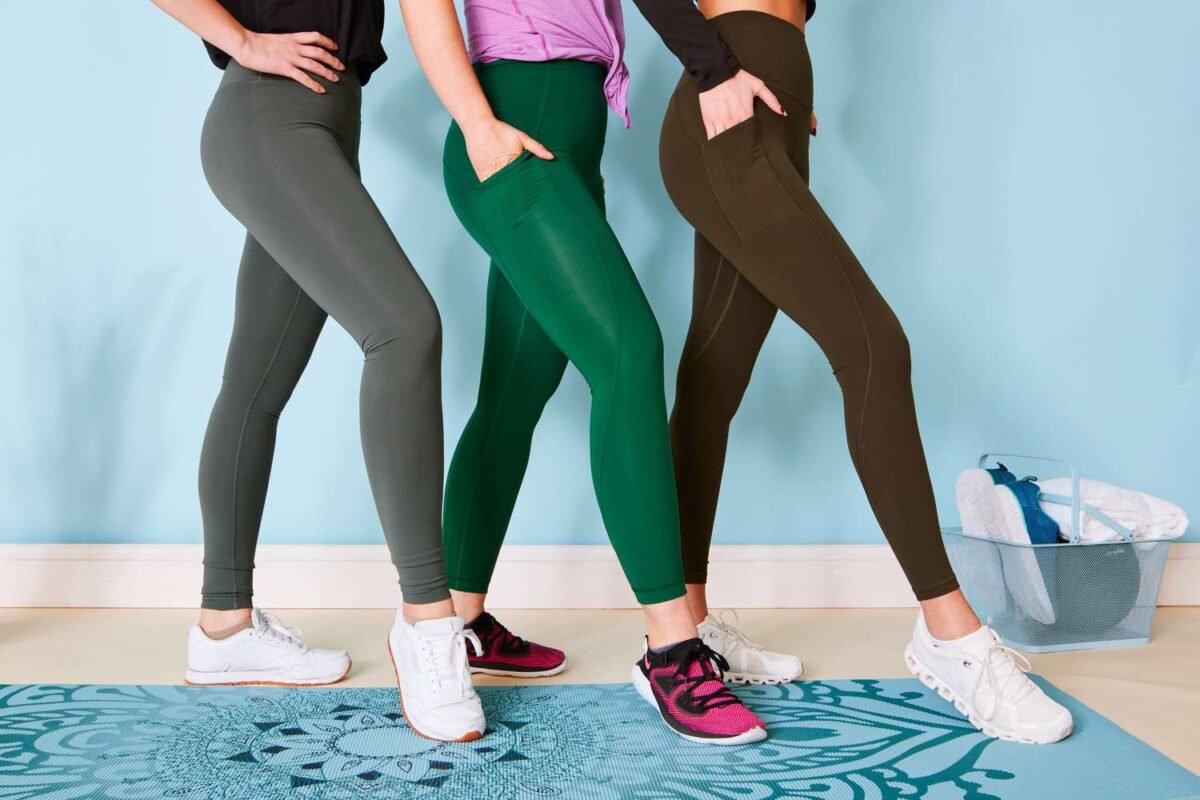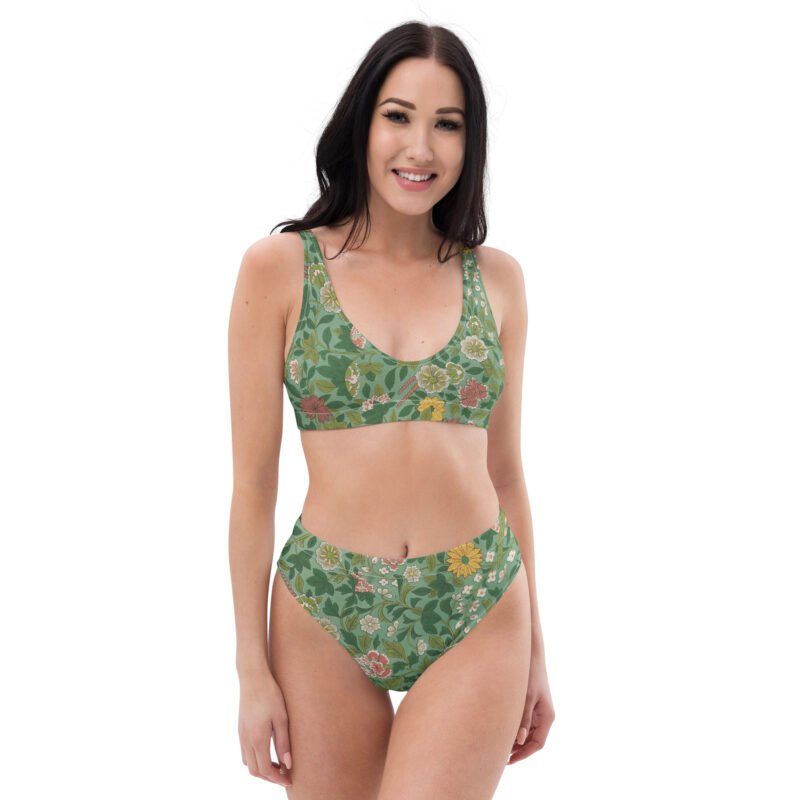Flare leggings have surged in popularity, becoming a staple in many wardrobes due to their unique style and versatility. Unlike traditional leggings, flare leggings are characterized by their fitted silhouette that flares out from the knee downwards, creating a distinctive bell-bottom effect.
The appeal of flare leggings lies in their ability to blend comfort with a chic, elongating effect that flatters various body types. They offer a refreshing alternative to the ubiquitous skinny leggings, providing a balance between fashion-forward and functional wear. Whether paired with a casual t-shirt for a relaxed look or a stylish blouse for a more polished ensemble, flare leggings seamlessly transition between different occasions and settings.
Despite their widespread popularity, some individuals encounter issues with flare leggings, particularly with fit. While the flare design is meant to provide a comfortable and stylish option, there are instances where wearers find their flare leggings to be unexpectedly tight. This can lead to discomfort and restrict the intended fluidity of movement that these leggings are known for. Understanding the causes behind this fit issue is crucial for those looking to enjoy the full benefits of their flare leggings without compromising on comfort.
Common Causes of Tight Flare Leggings
Flare leggings, known for their stylish and comfortable fit, can sometimes feel too tight, causing discomfort and restricting movement. Understanding the common causes behind this tightness can help in making better purchasing decisions and ensuring a more comfortable fit.
One primary reason for tight flare leggings is selecting the wrong size. Often, individuals may not accurately measure their waist and hip sizes or may rely on inconsistent sizing charts across different brands. This can lead to purchasing leggings that are either too small or too large, both of which can result in an uncomfortable fit. It is crucial to refer to the specific size guide provided by the manufacturer and, if possible, try on the leggings before making a purchase.
The fabric composition of leggings plays a significant role in how they fit. Materials with low elasticity, such as cotton or polyester blends without sufficient spandex, might not stretch adequately to accommodate body movements. On the other hand, overly stretchy fabrics can lose their shape quickly, leading to tightness in certain areas. A balanced fabric blend that includes spandex or elastane can offer the right amount of stretch and retention for a comfortable fit.
Manufacturing inconsistencies can also contribute to the tightness of flare leggings. Variations in production processes can result in slight differences in the final product, even within the same size category. This issue can be more prevalent in mass-produced items where quality control may vary. Opting for reputable brands known for their consistent quality can mitigate this problem.
Body shape and fluctuations are another factor to consider. Each individual’s body is unique, and flare leggings may fit differently based on one’s body type. Additionally, weight fluctuations due to factors such as diet, exercise, or hormonal changes can impact how leggings fit over time. It is essential to choose leggings that offer a degree of flexibility to accommodate these changes without becoming too tight.
Incorrect Size
One of the most prevalent reasons for experiencing tight flare leggings is selecting an incorrect size. This issue often arises from the oversight of not consulting a size chart or inaccurately measuring oneself. Retailers generally provide detailed size charts for their products, and it is essential to refer to these charts before making a purchase. Accurate measurements of one’s waist, hips, and inseam are key to finding a comfortable fit. Misinterpretation of sizes or assuming standard sizing across different brands can lead to selecting leggings that are too tight.
When purchasing flare leggings, it is advisable to follow the specific sizing guidelines offered by the brand. Sizes can vary significantly between manufacturers, and relying on one’s usual size without verification often results in discomfort. To avoid this, it is beneficial to measure oneself using a flexible tape measure and compare the results with the size chart provided. Pay particular attention to the measurements corresponding to the waist, hips, and length, as these areas are crucial for a proper fit.
If the leggings are already owned and are found to be too tight, consider trying a larger size. Many retailers offer exchange policies that allow customers to swap their purchase for a different size. Trying on a larger size may provide the comfort and flexibility required. Additionally, some materials have limited stretch capabilities, meaning a size up can make a significant difference in overall fit and comfort.
Fabric Composition
The fabric composition of your flare leggings plays a crucial role in determining their stretch and fit. Different materials have varying degrees of elasticity, directly impacting how snug or comfortable the leggings feel. For instance, leggings made with fabrics that contain a lower percentage of spandex or elastane are typically less stretchy. Consequently, these leggings may feel tighter and more restrictive, especially during activities that require a full range of motion.
Spandex and elastane are synthetic fibers renowned for their exceptional elasticity. When incorporated into leggings, even in small quantities, they significantly enhance the garment’s stretchability. A higher percentage of these materials allows the fabric to expand and recover more effectively, ensuring a better fit and greater comfort. Conversely, fabrics with minimal spandex or elastane content are less accommodating, often leading to a tighter fit that can be uncomfortable for prolonged wear.
When selecting flare leggings, it’s advisable to examine the fabric composition. Look for options that include a higher percentage of spandex or elastane, as these will provide the necessary stretch to accommodate your movements comfortably. Leggings with at least 10-15% spandex or elastane are generally more flexible and conform better to your body’s contours.
Additionally, blends that combine spandex or elastane with other fibers like cotton, polyester, or nylon can offer a balanced mix of comfort, durability, and breathability. These combinations ensure that the leggings are not only stretchy but also soft against the skin and resistant to wear and tear.
In summary, paying attention to the fabric composition when purchasing flare leggings can make a significant difference in their fit and comfort. Opting for leggings with a higher percentage of spandex or elastane will provide better stretch and a more comfortable wearing experience.
Washing and Drying
Improper washing and drying techniques are often significant contributors to flare leggings becoming tight. Most leggings, particularly those made from synthetic fibers or blends like spandex and polyester, are sensitive to heat and harsh washing conditions. Following the care instructions on the label is paramount to maintaining the integrity and fit of your leggings.
When washing flare leggings, it is crucial to avoid high heat settings. Hot water can cause the fibers to shrink, leading to a tighter fit. Instead, opt for a cold or lukewarm water setting on your washing machine. Additionally, using a gentle cycle helps prevent excessive agitation, which can stretch out the fabric and cause it to lose its elasticity over time.
Drying practices play an equally important role. High heat from a dryer can be particularly damaging, causing the fibers to contract and your leggings to feel uncomfortably tight. Air drying is the best method to preserve the shape and elasticity of your flare leggings. If you must use a dryer, choose a low heat setting or a tumble dry option. This mitigates the risk of shrinkage and helps maintain the leggings’ original fit and stretch.
Incorporating the use of a mesh laundry bag can also protect your leggings from the wear and tear of machine washing. This additional layer of protection minimizes the risk of fabric damage, ensuring your leggings remain as comfortable and fitting as when you first purchased them.
By adhering to these washing and drying guidelines, you can significantly extend the lifespan and comfort of your flare leggings, ensuring they remain a staple in your wardrobe without the unfortunate consequence of becoming too tight.
Body Changes
One of the most common reasons why flare leggings might feel too tight is due to changes in your body. Weight fluctuations, whether from gaining or losing weight, can significantly impact how your leggings fit. Similarly, muscle gain, especially in areas such as the thighs and glutes, can cause your leggings to feel more constrictive. As your body changes, the dimensions of your clothing need to adapt accordingly.
Weight gain can add extra inches to your waistline, thighs, or hips, making your previously comfortable flare leggings feel snug. On the other hand, weight loss might make them fit differently, especially if they were designed to be form-fitting. Muscle gain, often a desired outcome of fitness routines, can also alter the fit. Muscular thighs or a more pronounced glute area can stretch the fabric beyond its intended capacity, resulting in discomfort.
If you have recently experienced such body changes, it might be time to invest in a new pair of leggings. Consider leggings that offer better stretch and support to accommodate your new body shape. Many brands now provide options with flexible waistbands and fabrics designed to adapt to your body’s natural movements. This not only ensures comfort but also helps maintain the aesthetic appeal of flare leggings.
Shopping for new leggings can also be an opportunity to explore different sizes and styles that might suit you better. Look for high-quality materials that offer durability and elasticity, ensuring that they can accommodate future body changes as well. By choosing the right pair, you can achieve both comfort and functionality, making your leggings a reliable part of your wardrobe regardless of your body changes.
Poor Quality
One of the primary reasons why your flare leggings might feel too tight is due to their poor quality. Low-quality leggings often lack the necessary materials and craftsmanship to maintain their shape and stretch over time. As a result, they can become overly constrictive, leading to discomfort and a poor fit. Inferior fabrics are prone to losing their elasticity after just a few wears or washes, causing the leggings to shrink or warp. This degradation can make your once-comfortable leggings feel noticeably tighter and less accommodating.
Investing in high-quality leggings is essential for ensuring both comfort and durability. Reputable brands typically use superior materials such as spandex, Lycra, or a blend of high-quality fibers that retain their shape and flexibility. These materials are designed to withstand repeated wear and washes without losing their elasticity. Additionally, high-quality leggings often feature reinforced stitching and better construction techniques, which contribute to a longer-lasting and more comfortable fit.
High-quality leggings not only provide a better fit but also offer improved performance. They tend to have moisture-wicking properties, enhanced breathability, and better support, making them suitable for various activities such as yoga, running, or casual wear. By choosing leggings from reputable brands, you can avoid the frustration of dealing with ill-fitting, too-tight leggings and enjoy a more reliable and comfortable garment.
Impact of Fabric and Material
When evaluating why your flare leggings might feel too tight, the fabric and material play a crucial role. The choice of fabric significantly influences the stretch, comfort, and overall fit of your leggings. Stretchy materials like spandex, polyester, and cotton blends are commonly used in leggings, but each offers different properties that can enhance or restrict the fit.
Spandex, also known as elastane or Lycra, is a synthetic fiber renowned for its exceptional elasticity. It allows leggings to stretch and conform to your body’s shape, providing a snug yet comfortable fit. High spandex content in leggings generally ensures better flexibility and movement. However, if the percentage of spandex is too high, it can cause the leggings to feel overly tight, especially if the sizing isn’t accurate.
Polyester is another popular material in the production of flare leggings. It is durable, resists shrinking, and is often blended with spandex to enhance stretchability. Polyester-spandex blends offer a balance of comfort and elasticity, making them suitable for active wear. However, the breathability of polyester can be limited, which might contribute to a tighter feel during prolonged wear, especially in warmer conditions.
Cotton blends introduce a different set of attributes. Cotton is soft, breathable, and comfortable against the skin. When combined with spandex, cotton leggings offer a stretch that accommodates various body shapes while maintaining a high level of comfort. However, pure cotton lacks the elasticity provided by synthetic fibers, which can result in a less flexible fit if not blended properly.
Understanding the properties of these materials is vital when purchasing flare leggings. The fabric composition will not only determine the fit but also the durability and comfort of the leggings. Always check the fabric content on labels and consider your specific needs, such as the level of activity and personal comfort preferences, to ensure that your leggings provide the ideal fit and feel.
Choosing the Right Size
Choosing the correct size for flare leggings is crucial to ensure both comfort and style. Accurate measurements are the foundation of finding the perfect fit. Begin by measuring your waist and hips using a flexible measuring tape. For the waist, measure around the narrowest part of your torso, typically just above the belly button. For the hips, measure around the fullest part of your hips and buttocks. Note down these measurements, as they will be essential when referring to size charts.
Size charts are vital tools for determining the appropriate fit. Most brands provide size charts that correspond to your measurements. It’s important to match your measurements as closely as possible to the chart provided by the specific brand of flare leggings you’re considering. Keep in mind that sizing can vary significantly between brands, so what is a medium in one brand might be a small or large in another. Always refer to the brand’s specific size chart to avoid discrepancies.
Brand-specific sizing variations can be confusing, but understanding them can make a significant difference in your shopping experience. Some brands might have a more generous cut, while others might have a more form-fitting design. Reading customer reviews can provide insight into whether a brand tends to run small, large, or true to size. This information can be instrumental in guiding your decision.
If possible, try on multiple sizes to determine which one offers the best fit. This is particularly important for flare leggings, as the fit around the thighs and waist should be snug but not restrictive. Trying on different sizes can also help you assess the stretch and material of the leggings. Remember that comfort is key; a pair that feels too tight in the store will likely be uncomfortable during extended wear.
Body Shape and Fit
The fit of flare leggings can vary significantly depending on an individual’s body shape. Understanding how different body shapes interact with flare leggings is essential to selecting a pair that provides both comfort and style. Generally, body shapes are categorized into several types, including pear, apple, hourglass, and rectangular. Each type presents unique considerations when choosing flare leggings.
Pear-shaped individuals typically have wider hips and thighs with a smaller waist. For this body type, flare leggings that offer extra stretch in the hip area and a snug fit around the waist are ideal. Look for leggings with a higher waistband to ensure they stay in place and provide adequate coverage.
Apple-shaped bodies, characterized by a fuller midsection and slimmer legs, benefit from flare leggings that offer more room around the waist and midsection. High-rise leggings can help provide better support and avoid any tightness around the stomach. Additionally, choosing leggings with a wider waistband can also help in distributing pressure more comfortably.
Hourglass figures, defined by a well-balanced bust and hips with a narrower waist, often find that flare leggings fit well without much adjustment. However, to maintain the natural curves, it is advisable to select leggings with a good amount of stretch and elasticity. A medium to high-rise waist can enhance the fit and comfort for this body type.
Rectangular body types, which have a more uniform width across the bust, waist, and hips, should look for flare leggings that add a bit of shape and contour to their figure. Opting for leggings with design elements such as side panels or color blocking can create an illusion of curves. Leggings with a mid-rise waist often provide the best balance between comfort and fit for this body shape.
The key to a comfortable fit lies in understanding your body type and selecting flare leggings that cater to your specific needs. Paying attention to the waistband, the stretchability of the fabric, and the overall cut of the leggings can make a significant difference in achieving a perfect fit.
Stretching and Breaking In New Leggings
New flare leggings can often feel too tight when first worn, but there are several effective techniques to make them more comfortable. These methods include gentle stretching, wearing them around the house, and washing to loosen the fabric. Each approach requires minimal effort and can significantly enhance the fit of your leggings.
One of the simplest ways to stretch your new flare leggings is through gentle stretching. To do this, gently tug at the fabric in areas that feel particularly tight. Focus on stretching the waistband, thighs, and calves. Be careful not to pull too hard to avoid damaging the fabric. Perform this stretching several times, as the leggings will gradually expand and become more comfortable.
Another effective method is to wear your leggings around the house. This technique allows the fabric to stretch naturally to the contours of your body. Start by wearing the leggings for short periods, gradually increasing the duration as they become more comfortable. You can also perform light exercises or stretches while wearing them to encourage the fabric to loosen.
Washing the leggings can also help in breaking them in. Begin by washing your leggings in cold water with a mild detergent. Avoid using hot water, as it can cause the fabric to shrink. After washing, hang the leggings to air dry, as using a dryer can also lead to shrinkage. If you find that the leggings are still tight, you can repeat the washing process a few times. Over time, the fabric will soften and become more flexible.
By following these simple steps, you can effectively stretch and break in your new flare leggings, ensuring a more comfortable and flattering fit. These methods will help you avoid the discomfort of overly tight leggings and allow you to enjoy your new wardrobe addition with ease.
Alteration and Customization Solutions
If your flare leggings are too tight, there are several alteration and customization solutions to ensure a more comfortable fit. One of the most reliable options is professional tailoring. A skilled tailor can assess the fabric and fit of your leggings and make precise adjustments. Tailoring services can include letting out seams, adjusting the waistband, or even adding extra fabric panels to increase the overall size. When seeking professional help, it’s advisable to choose a tailor with experience in altering stretch fabrics to ensure the best results.
For those who prefer a hands-on approach, DIY alterations can be a practical solution. Simple adjustments, such as letting out the side seams, can be done with a sewing machine. If the leggings have enough seam allowance, gently unpick the stitches, then resew the seams to provide additional room. Another DIY method involves adding panels or inserts. This technique involves cutting and sewing extra pieces of stretchy fabric into the sides or back of the leggings, creating more space and maintaining the flare style.
When approaching DIY projects, safety and accuracy are paramount. Use sharp fabric scissors and a sewing machine that can handle stretch stitches. Be sure to measure carefully and pin your adjustments before sewing to avoid mistakes. It may be helpful to practice on an old pair of leggings or scrap fabric first to perfect your technique.
Consider where to source the extra fabric for your alterations. Matching the original material in terms of stretch and texture is crucial for a seamless look. Fabric stores often carry a range of stretch fabrics, and online retailers can be a good resource as well.
Another critical aspect is comprehending the fabric composition. Different materials offer varying degrees of stretch and support. Fabrics like spandex and polyester blends are commonly used for their elasticity and durability, making them a popular choice for activewear. However, always check the fabric’s stretchability and breathability to ensure it aligns with your comfort needs and intended use.
Additionally, considering your body shape is essential when selecting flare leggings. Every body is unique, and what works for one person may not work for another. Pay attention to how the leggings fit around your waist, hips, and thighs to find a pair that flatters your figure while providing the necessary comfort and flexibility.
Maintaining the fit and comfort of your flare leggings involves proper care. Follow the manufacturer’s washing instructions to preserve the fabric’s integrity and elasticity. Avoid excessive heat, which can deteriorate the material, and consider air drying to extend the lifespan of your leggings.
We encourage you to share your experiences and solutions regarding flare leggings. Your insights can be invaluable to others facing similar challenges. By exchanging tips and advice, we can all find the perfect balance between style and comfort in our flare leggings.



